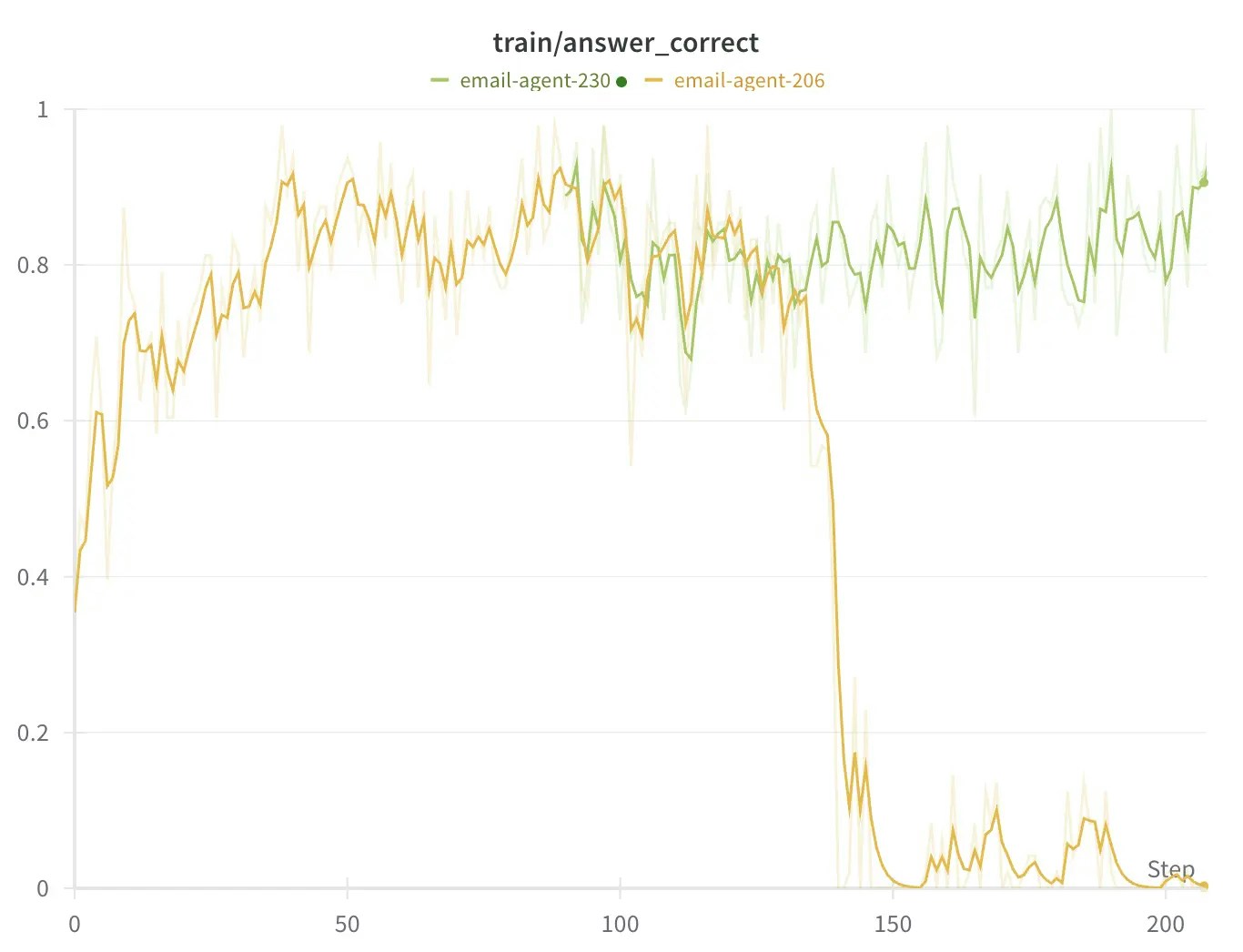
Run 206 had a catastrophic failure. We fixed it by forking into run 230 before the point of collapse.
- Training has gone off track and you want to restart from a known good checkpoint
- You want to experiment with different hyperparameters from a specific point
- You need to branch off multiple experiments from the same checkpoint
This feature is marked as experimental because we’re still refining the API
shape. However, the core functionality will remain stable.
Basic Usage
The simplest way to fork a checkpoint is to specify it when creating your model:Forking from S3
If your checkpoints are stored in S3, you can fork directly from there:Parameters
from_model (required)
The name of the model to fork from.
from_project (optional)
The project containing the model to fork from. Defaults to the current model’s project.
from_s3_bucket (optional)
S3 bucket to pull the checkpoint from. If not provided, will look for the checkpoint locally.
not_after_step (optional)
The maximum step number to use. The function will use the latest checkpoint that is less than or equal to this step. If not provided, uses the latest available checkpoint.
verbose (optional)
Whether to print detailed progress information during the forking process.
How It Works
- Checkpoint Selection: The system finds the appropriate checkpoint based on your
not_after_stepparameter - S3 Pull (if needed): If forking from S3, only the specific checkpoint is downloaded, not the entire model history
- Checkpoint Copy: The checkpoint is copied to your new model’s directory at the same step number
- Training Continuation: Your model can now continue training from this checkpoint
Example: Lowering the Learning Rate
Here’s a practical example of using checkpoint forking to test a lower learning rate:Notes
- Checkpoints are forked at the same step number they had in the source model
- The
not_after_stepparameter uses<=comparison, so specifying 500 will include step 500 if it exists - Only checkpoint files are copied - training logs and trajectories are not included in the fork

